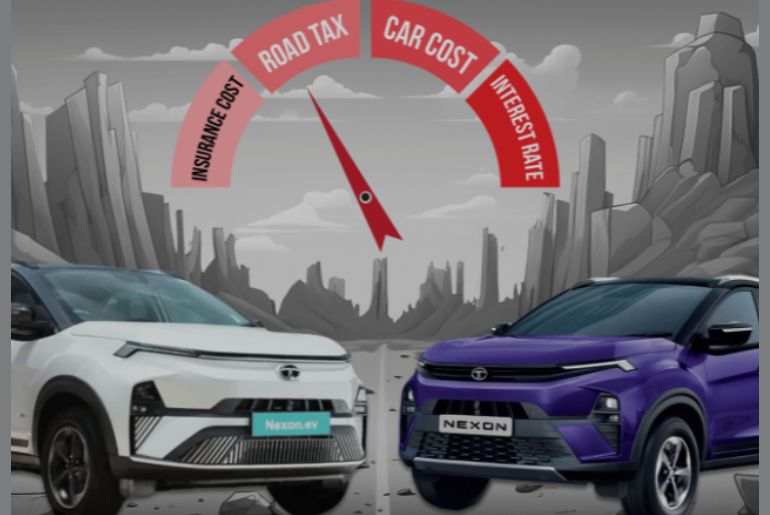Last-mile delivery, which focuses on the last leg of transportation from a distribution center to the final customer, is a challenging area of logistics. The demand for economical, effective, and ecologically friendly delivery methods has increased as e-commerce expands. With an emphasis on initial investment, operating expenses, environmental impact, and regulatory issues, this comparison looks at the economics of operating an Electric Level 5 (L5) autonomous 3-wheel vehicle (3W) against an Internal Combustion Engine (ICE) 3W for last-mile delivery.
1. Initial Investment and Capital Costs
Compared to an internal combustion engine (ICE) 3W, the starting cost of an electric L5 3-wheel vehicle is substantially higher. The cost of an Electric L5 3W typically ranges from $25,000 to $50,000, depending on the particular technology. The battery accounts for a significant amount of the vehicle’s cost; a 10 kWh battery typically costs between $2,000 and $5,000. This cost may go up even more with larger or more sophisticated batteries. Furthermore, the incorporation of autonomous technology may raise the vehicle’s total cost by an additional $10,000 to $50,000.
For last-mile distribution, an average ICE 3W typically costs between $3,000 and $7,000. These cars use conventional gasoline systems. Because of this, an ICE 3W has a significantly reduced total cost, which makes it a desirable option for operators looking for a cost-effective solution.
2. Operating Costs
Due to lower energy costs, fewer maintenance requirements, and the lack of driver expenses, electric L5 3-wheel vehicles have substantially lower operating costs than ICE 3Ws. Electric L5 3Ws have significantly reduced energy expenses; a full charge (10 kWh) usually costs between $1.20 and $2.00, or $0.10 to $0.20 per mile. Because they have fewer moving parts, electric cars also require less maintenance. An EV’s annual maintenance typically costs between $200 and $500, while an ICE vehicle’s maintenance costs between $500 and $1,000. However, there are extra expenses associated with maintaining the autonomous technology, including as software upgrades and sensor calibrations, which can cost anywhere from $500 to $1,500 annually.
3. Environmental Impact
The influence on the environment is a crucial factor, particularly as demand mounts to lower carbon emissions, particularly in cities. When operating, electric L5 3-wheel vehicles emit no pollutants, making them environmentally beneficial. However, the source of the electricity used to charge them determines their total carbon footprint. Electric L5 3Ws have the lowest emissions when driven by renewable energy sources like solar or wind, helping to create a cleaner, greener transportation system. However, ICE 3-Wheel Vehicles release greenhouse gases (GHGs) that are bad for the environment and human health, like carbon dioxide (CO2), nitrogen oxides (NOx), and particulate matter. Even though fuel economy can somewhat lower emissions, internal combustion engines (ICE) still contribute significantly to air pollution and climate change.
4. Regulatory Considerations and Incentives
Globally, governments are encouraging the switch to electric vehicles more and more. With a range of incentives, governments are aggressively encouraging the use of electric L5 three-wheel vehicles. Electric vehicles will become more and more necessary for delivery in urban areas as cities continue to tighten their emissions standards. Electric L5 3Ws are a desirable alternative for businesses because of these encouraging regulations.
On the other hand, as emissions rules tighten, especially in urban low-emission zones (LEZs), ICE 3-Wheel Vehicles have increasing difficulties. The feasibility of using ICE cars for last-mile delivery in urban areas may be hampered by these rules’ increased compliance costs, possible fines, and operating limitations. It is probable that ICE 3Ws will lose favor as environmental regulations deepen.
5. Market Developments in India
The government of India has launched a number of programs, like electric 3Ws, to promote electric vehicles. Through Phase-II of the FAME India Scheme, which has a budget of Rs 10,000 crores and intends to encourage the use of 5 lakh electric three-wheelers (3Ws), the Indian government is actively promoting the use of these vehicles. Several state governments are also implementing initiatives to promote the use of electric cars (EVs) in addition to this federal initiative. These initiatives aim to lower the carbon footprint of urban mobility and hasten the shift to greener modes of transportation.
The battery swapping model, which enables electric three-wheelers to be marketed without batteries, is a noteworthy advancement in the EV market. This technology reduces the initial cost of purchasing electric 3Ws, opening up new opportunities for enterprises and industries. Businesses can use battery swapping infrastructure, which allows them to swap out depleted batteries for fully charged ones at designated swapping stations, in place of owning the battery. Higher running costs are the price paid for this, even when the initial investment is decreased. When compared to outright battery ownership, battery renting and changing fees might add up over time and result in higher long-term costs. Inspite of this, companies trying to save capital investment still find the battery swapping strategy to be a compelling choice.
Conclusion
Even while an Electric L5 3W is significantly more expensive initially than an ICE 3W, it becomes a more cost-effective choice due to its lower running costs, lack of personnel expenditures, and environmental benefits. Furthermore, the legislative environment is shifting in favor of electric vehicles, particularly as cities impose more stringent emissions regulations. In the medium term, ICE 3Ws continue to be a cost-effective option for enterprises because of their established technology and cheaper upfront expenditures. However, electric L5 3Ws will probably become more competitive over time as government incentives increase and the cost of electric vehicles continues to decline.
The emphasis on low-cost, high-utilization electric vehicles and battery swapping models offers a great opportunity for companies trying to cut costs and boost efficiency in India, where the use of electric 3W is growing. The market for electric three-wheelers is anticipated to expand significantly over the next several years, according to industry projections. Government initiatives to lower transportation costs and promote sustainable energy options for last-mile connectivity are helping to support this expansion.


